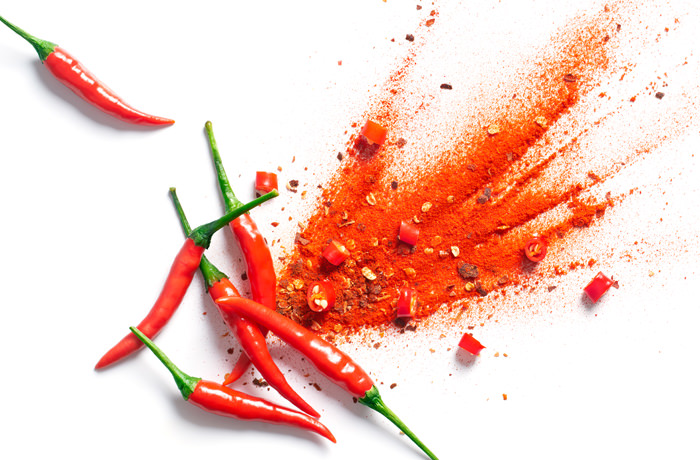Originally, the chili plant comes from the northern Andean regions. About 9,000 years ago, the fruits were already called "chili" in the language of the Indians living there.
Already at the time of the discovery of South America by the Europeans in the 15th century, the sharp pod had spread in South America, the Caribbean and Central America to the border of today's USA. The distribution can be traced back partly to birds, but also to the migration of Indian peoples.
At the beginning, Europeans did not find any special taste in the hot spice and rather used the plant as an ornamental plant. Only in the 19th century did this change and chilies became established, especially in the cuisine of Eastern Europe. Interestingly, chilies were spread quickly throughout the European colonies in Africa and Asia, especially India and China.
Chilies are unique in their variety in the spice world.
Chilies fascinate by their immeasurably many forms, colors and degrees of sharpness. Several thousand different varieties have emerged from the five known cultivated species, some of which are only cultivated and used very regionally. In Mexico alone, over 150 varieties are known. All of them are grouped under the "Capsicum" family.
Chilies are used in the kitchen fresh or dried as powder or flakes.
Flavour of Chili
The countless chili varieties, such as Cayenne, Chipotle, Birds Eye, Thai Chili or Habanero captivate with their special aroma and are considered a very good source of vitamin C. Their taste ranges from a mildly sweetish pungency to a burning pungent note. The proportion of alkaloid capsaicin is responsible for the severity of the chilies. The capsaicin concentration is determined today with modern measuring instruments and classified according to the Scoville scale. Depending on the concentration, this ingredient of the chili triggers the taste hell. Among the hot chili varieties are e.g. Habanero chilis. The popular jalapeños are already significantly milder; the classic cayenne chili has a slightly biting, bitter pungency...
Usableness of Chili
Today it is impossible to imagine Mexican, Caribbean, Chinese, Indian, Eastern European and Thai cuisine without a pungent note of chili. Chilies are used both for their aromas and for their typical pungency.
In Mexico, for example, chili belongs in every chili con carne or in the spicy mole poblano, which consists of chocolate and various spices. In Africa Ras el Hanout, Harissa and Berbere are prepared with chili. No Hungarian goulash or Indian curry can do without the piquant spiciness, but also sweet dishes such as chocolate, mousse, brownies or tarts get a fine spiciness in modern cuisine with chili.







